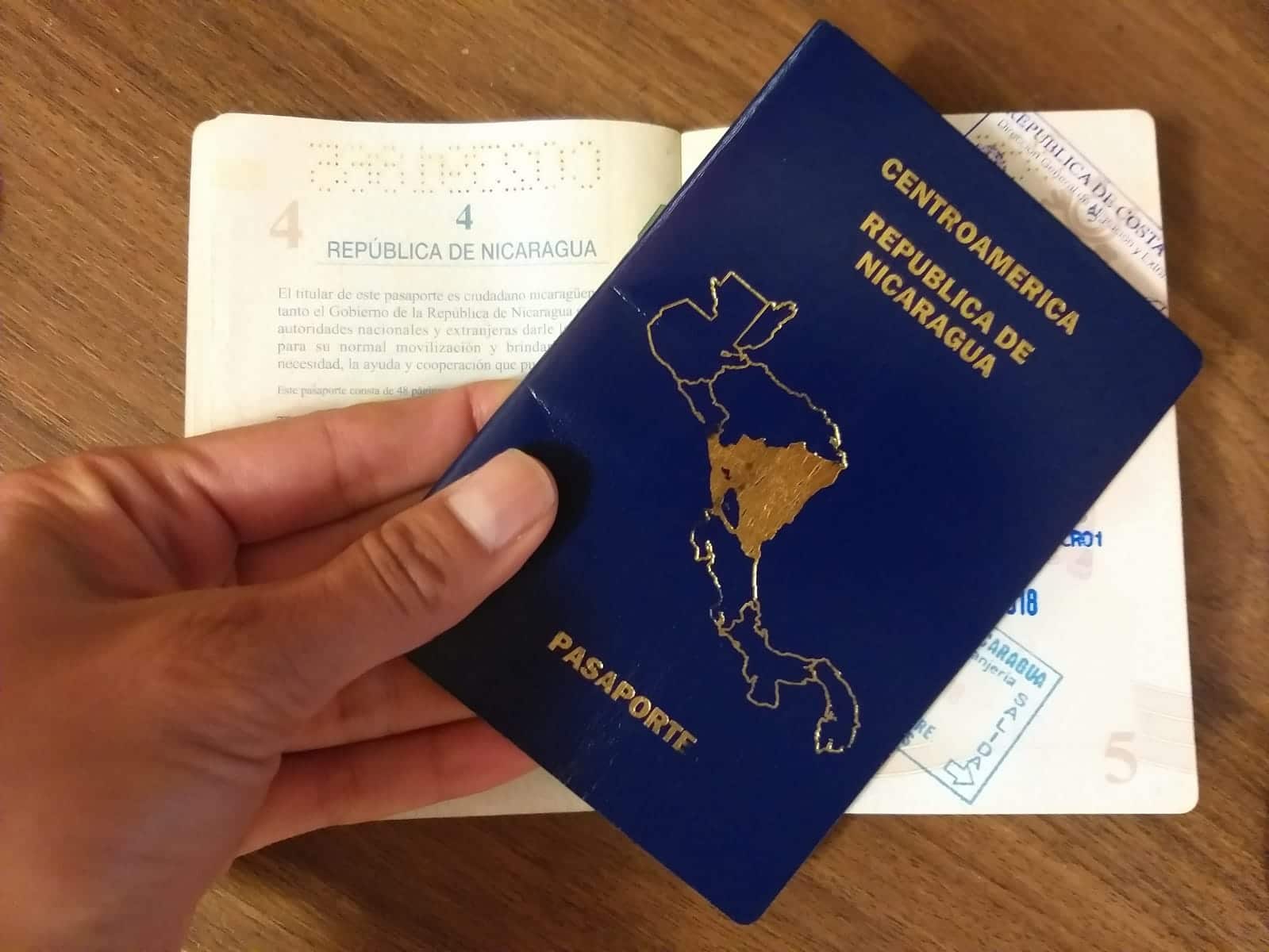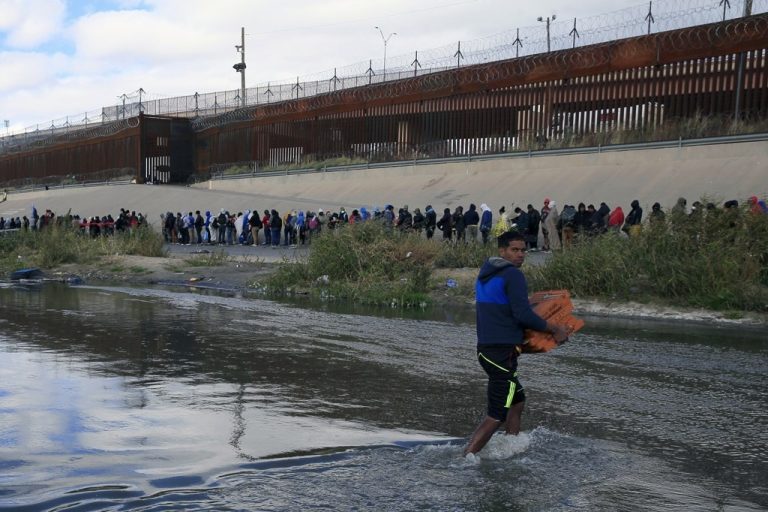20 de diciembre 2022

Nicaragua: Public Employees Hindered from Traveling to USA

PUBLICIDAD 1M
PUBLICIDAD 4D
PUBLICIDAD 5D
Experts offer advice to migrating Nicas on how to avoid becoming victims of ransom attempts, and what families should do if this occurs

A citizen crosses the Rio Grande to sell pizzas to migrants trying to enter the United States at the border in El Paso, Texas. Photo: EFE/Luis Torres
The December 5th rescue of 253 migrants – 186 of them Nicaraguans – from a house in Durango, Mexico, is an example of the uptick in kidnappings that began in mid-November along the routes commonly used to cross Mexico towards the US border. The most frequent large scale victims have been Nicaraguans, warn some of the non-governmental organizations that assist migrants.
On Sunday, December 11, over 1,500 migrants turned themselves in to U.S. authorities in one of the largest crossings ever through El Paso Texas. Hundreds of them were Nicaraguans who had been kidnapped and held for ransom by organized cartels.
According to the organization Texas Nicaraguan Community (TNC), the increase in the kidnappings of Nicaraguans could be related to the social media posts shared by family members of kidnapped migrants, seeking support from anywhere to raise the [ransom] money.
“The criminal groups have found a niche, a piggybank where they can get money, because the Nicas begin posting [on social media] and are going to raise the money [to pay the kidnappers] however they can,” TNC highlights.
The latest twist has been the massive kidnappings like in Durango. A member of the TNC board commented that the National Search Commission has received reports of 38 Nicaraguan migrants who’ve been kidnapped but specified that there’s a large sub-registry of families, since many prefer to pay the ransom and not denounce it.
“There’s fear, because the intimidation is very strong. As a result, there are many cases where they don’t dare even report what’s happening,” the TNC member stated.
The places in Mexico where kidnappings are reported most frequently are: Oaxaca, in the south; Ciudad Juarez on the northern border; and Veracruz in the central east coast.
Despite the risks of travel through Mexico, thousands of Nicaraguans leave every day on “excursions” to Guatemala. That’s where their road begins with the Mexican traffickers popularly known as “coyotes”, although they demand to be called “guides.” They’re the ones who will lead the migrants on the trip to the US border. The Nicaraguans, like so many others, are impelled to emigrate due to the worsening economic crisis, hunger, and the intensification of the de facto police state maintained by the regime of Daniel Ortega and Rosario Murillo.
Together, Nicaraguans, Cubans and Venezuelans have spearheaded a record number of migrants crossing over into the U.S. in 2022. The fiscal year closed with 2.7 million apprehensions by the US Customs and Border Patrol Agency.
Between January and October, 147,277 Nicaraguans were detained by US Border Patrols, far exceeding the 87,749 Nicaraguans that turned themselves in to the authorities in 2021.
Given this context, the NGOs reiterate all the dangers these migrants face, including kidnapping, and as a result, they don’t recommend this type of movement. However, they caution, once a person makes the decision to leave their country in an unauthorized way, they should consider taking certain measures in order to minimize the risk of getting kidnapped and be able to arrive at the border safely. They also recommend some measures that families should adopt.
“You shouldn’t forget that the ‘Coyote’ is first and foremost a smuggler. If they can get more out of you than the $3,500 or so you paid, they will. The Coyote is part of a criminal group and may even make it seem like he was kidnapped too,” the TNC warns.
The organization warns that many families expose themselves to additional extorsion by posting on their social media sites the disappearance of their relative, or by reporting the case to a fraudulent page that is set up to gather information. It’s probable that such a person will then receive a call from someone, informing them they’re holding their relative for ransom, although in reality the missing person could be in the hands of Mexican immigration authorities.
Ronmell Lopez, a specialist in Immigration Law based in Los Angeles California, recommended that you make use of the telephone numbers of human rights organizations, such as the UN High Commissioner for Refugees (UNHCR) or the Mexican Commission for Refugee Aid, which supports immigrants and also provides legal safe conduct permits for transit through Mexican territory.
The UNHCR telephone number is +41 22 92 89 855. They’ll take the data on the missing person to check if they’re in jail, or after a certain length of time list them as kidnapped.
During this time, the human rights organizations will maintain telephone contact with the family members and provide follow-up until the person is located,” Lopez indicated.
Between March and November of this year, NAHRA counted 114 Nicaraguan migrants reported missing, kidnapped or deceased. Of these, 82 people died, 14 were kidnapped and 18 are still missing.
*Article includes information from “Voces Unidas”
This article was originally published in Spanish in Confidencial and translated by Havana Times
PUBLICIDAD 3M
Confidencial es un diario digital nicaragüense, de formato multimedia, fundado por Carlos F. Chamorro en junio de 1996. Inició como un semanario impreso y hoy es un medio de referencia regional con información, análisis, entrevistas, perfiles, reportajes e investigaciones sobre Nicaragua, informando desde el exilio por la persecución política de la dictadura de Daniel Ortega y Rosario Murillo.
PUBLICIDAD 3D